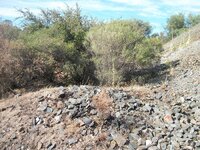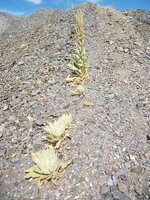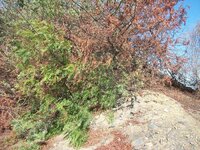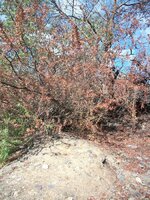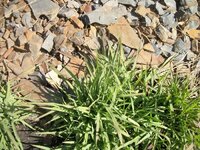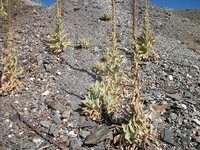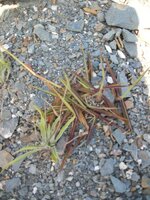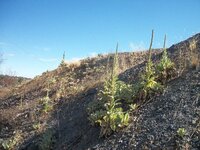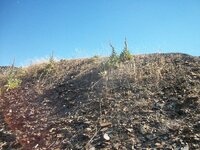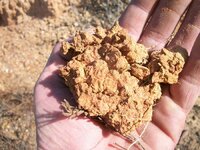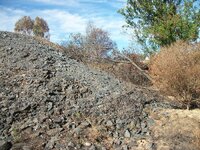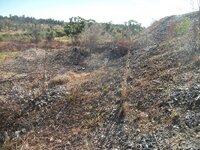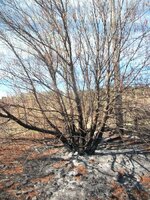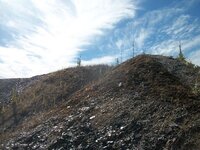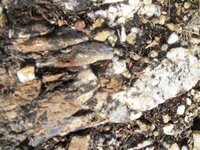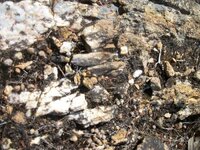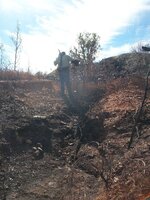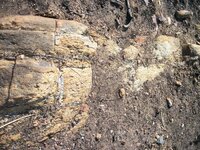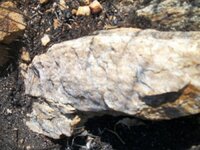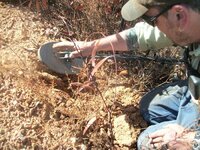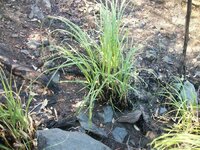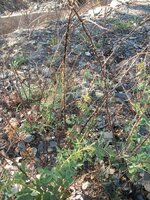tinpan
Silver Member
Hi all, This week i have hunting the remains of saddle quartz reef just below the tailing of a gold mine .The Garden Gully United -Ground first worked in 1857 Soon abandonded. In 1861 Latham's Reef at 175 feet.A public company was formed.The results were disappointed but was when leased to a tribute company.The tribute company struck gold in 1873 and in 1874 the lease expired and the parent company took over., 61,000oz's was won with some yeilds 10 oz,s per ton of rock .Prominent mine in the 1880's, 1890,s to 1900. Best gold -Latham reef 173 feet to 209 feet and from 600 feet to 2239 feet. Total gold yeild 444,337 ozs. Paid shareholders of the time $2,101,898 in dividends.
I started just below the main tails dump which is about half way up the hill and tailings is over 100 feet high.Since the mine closed in 1919 the annual rain has washed the ground beneath the bottom of the dump away. Revealing the fractured remains of a surfacing saddle reef. Run of slate and sedimentry rock ,large pieces of broken quartz . all nealy packed in red clay. I started slowly and picked a couple of pieces of gold out of the clay and then another piece. Ok time to go a back over the line of the reef again . Time to go deeper. Brought the gain up from 8 to max 15 . Go a bit noisey brought frq. down 5 to 99 . That did the trick. Nothing for a bout 40 feet and then a gentle sound as i passed the coil over this large piece of visable quartz .I knew the signal was not coming from the quartz or i would have got the it the first time. Drove the pick into the hard clay and pulling out 5 pound pieces .The 6th piece of clay light up and the GPX was on over load. Left that piece and drove in one more time and hit the solid rock pan. Ran the coil over the hole ,left no more targets. Either i had a nugget or neat little deposit missed by the first miners . After breaking up the lump i had a small hand full of gold pieces. Slightly worn so it was pocket of Colluvial or hill wash gold.
tinpan
I started just below the main tails dump which is about half way up the hill and tailings is over 100 feet high.Since the mine closed in 1919 the annual rain has washed the ground beneath the bottom of the dump away. Revealing the fractured remains of a surfacing saddle reef. Run of slate and sedimentry rock ,large pieces of broken quartz . all nealy packed in red clay. I started slowly and picked a couple of pieces of gold out of the clay and then another piece. Ok time to go a back over the line of the reef again . Time to go deeper. Brought the gain up from 8 to max 15 . Go a bit noisey brought frq. down 5 to 99 . That did the trick. Nothing for a bout 40 feet and then a gentle sound as i passed the coil over this large piece of visable quartz .I knew the signal was not coming from the quartz or i would have got the it the first time. Drove the pick into the hard clay and pulling out 5 pound pieces .The 6th piece of clay light up and the GPX was on over load. Left that piece and drove in one more time and hit the solid rock pan. Ran the coil over the hole ,left no more targets. Either i had a nugget or neat little deposit missed by the first miners . After breaking up the lump i had a small hand full of gold pieces. Slightly worn so it was pocket of Colluvial or hill wash gold.
tinpan
Amazon Forum Fav 👍
Attachments
Upvote
0


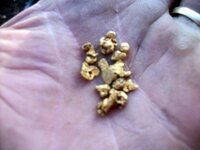
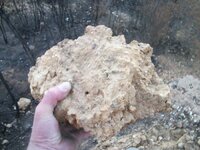
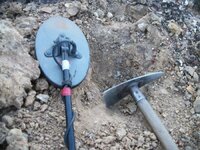
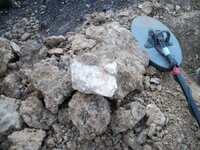
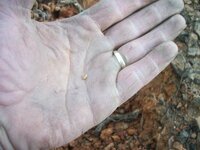
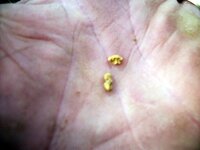
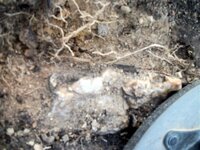
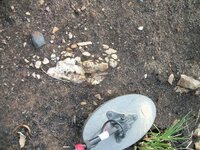
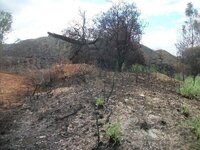
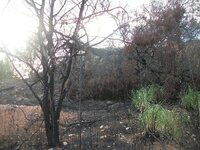
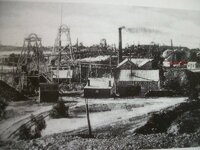
 Nope,its called real world experience and not out of some book .....you should try it
Nope,its called real world experience and not out of some book .....you should try it
